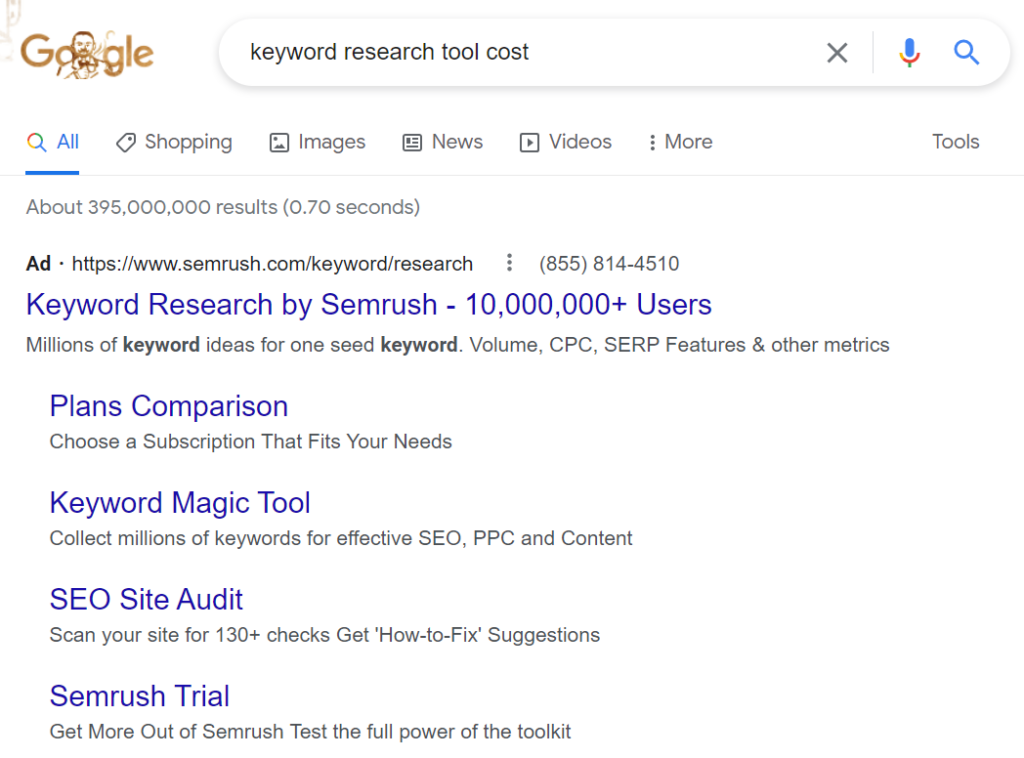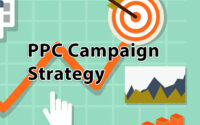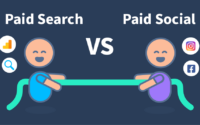What Is Ad Rank And How To Improve It
Ad rank is the main factor in your ad positioning on Google Search. It is the value that determines your ad position when considering other ads. But it is not the only factor that effects to your ad position. There are many other factors. This guide will help you to get an clear idea about what is ad rank, why it matters and how to improve it without increasing budget.
What Exactly Is Ad Rank?
Ad rank is the value that determines your ad position where your ads are shown relative to other ads. Let’s take an example. If your ad show in the second position on a page, your ad rank for that search is two. There are some factors that effect to ad rank.
Years ago, ad rank was a simple calculation. Your max CPC and the number of competitors relative to the search were involved for it. But now calculating ad rank is more complicated. Because recently Google ads introduced key changes to the ad ranking like thresholds and machine learning.
The some factors that effect to the ad rank are given below.
- Your bid amount.
- Auction-time ad quality.
- Competitiveness of auction.
- Context of a user’s search.
- Expected impact of extensions and other ad formats.
To give an ad rank, each specific keyword search is analyzed to determine these factors. Which means two different search auctions give you two different rank. Because every search is fundamentally different from other searches. Now take a look at above factors more.
Your bid amount:
This is the amount you are willing to pay to show up in a specific position. There are minimum and maximum bid amounts. As an example if you are willing to pay maximum CPC of $2 and next highest bidder has maximum CPU of $1.60, you would pay $1.60 in that auction. .
Ad quality:
There are 3 factors determine your ad quality. They are expected click-through rate (CTR), ad relevance, and landing page experience.
User signals and attributes:
Location, device type, and time of day are 3 common user signals that effect to the ad rank.
Context of search:
If the two different people search the same keywords, they can get two different contexts.
Competitiveness of auction:
Auctions for related but similar searches, can effect your ad rank. Let’s take an example. [wedding invitations] and [wedding invites] are related but similar search terms. Therefore search terms could be informed by each other.
Expected impact of ad extensions and other formats:
Google look at ad extensions for the CTR, relevancy and overall experience with the ad.
Google Ads is an auction. The higher the bid, the higher position you will get in advertising . But if your ads are better, there is always a chance to get better spot even you bid significantly less amount than a other competitors.
There are some differences between organic searches and paid searches, But Google use similar functions to determine ad spot. Because Google always try to give more relevant information to searchers. Now you have got an clear idea about what is ad rank and how it is calculated. Now take a look at some methods you can follow to improve your ad rank.
1. Improve Your Ad Relevance
Ad relevancy a major factor that determines your ad quality. Therefore it’s important to improve ad rank. But, what is ad relevancy? Ad relevance is the factor that how much your ad matches with the user’s search intent.
How would you improve ad relevance? You can do it by auditing your ad copy and cross-reference the keywords you are bidding. Your headlines and descriptions should include keywords that a user is searching. Responsive Search Ads can be used to test different copies of ads and determine resonates that best with a user.
Google gives reporting about headlines and descriptions and them performances. If you found an ad copy that perform well, you can use it. Pin your top performing headline top of this ad. Then that headline will show up with your ad. You can add relevant keywords that people are searching for, to your copy also.
Early years, use SKAGs (single keyword ad groups) that is easy to get higher ad relevance with. Because these days used to match a particular search term with post headline. But now many of advertisers focus on the holistic picture because Google’s expansion of exact match types. If you are still using SKAGs, you would be limiting yourself for sure.
User’s intent
The ad also needs to match with a user’s intent. As an example, if I search “keyword research tool cost”, my intent would be to find how much a tool like that would cost per month. The result will be look like below image.

If you look at that ad carefully, you will find out all the key points of a good ad like below.
- The headline matched with my search query.
- Sitelink extension to compare plans and pricing are used.
- Brand authority with over 10 million users are provided.
- Additional trial period to test out before buying.
You may get an clear idea about ad relevancy is not just trying to fit keywords. Google focus on user intent and try to give what exactly they want and solve their problem.
2. Focus On Ad Extension Content
You might forget that factor specially when setting up new campaigns and also ad groups. You might think its not an important part, but the truth is it is a vital part of increasing your ad rank. Firstly, they help to increase your CTR, As a result they help increase your ad rank also.
But why do they help increase CTR? Here is the answer. You can give additional information about your business to users through ad extensions. Because its limited character count with headlines and descriptions.
But don’t use ad extensions with only the purpose of adding more information. Because it can lower your ad rank, if they don’t align with the search terms. You can use below ad extensions.
- Location (and Affiliate Location).
- Sitelink.
- Callout.
- Structured Snippet.
- Price.
- App.
- Image.
- Lead Form.
- Promotion.
- Call.
You should pick ones from above ad extensions, that goes with your campaign goals. Don’t use all of them. As an example, If you are trying to drive in-store traffic to your local business, its better to use location extension. But if you wanna drive more web traffic, you can add relevant sitelinks to different areas of your site. If your goal is to lead generation, You can use lead form extension. If you don’t have a stellar landing page, adding lead form extension is better.
Adding ad extension, that aligning with your goals, will increase your ad rank.
3. Create Better Landing Pages
This is one of most important part to improve your ad ranking. Imagine you are searching something. You must hope your search query direct to what you wanna see when you get to a website. But after you clicked on paid ad and you getting disappoint about your landing page experience. Is should be frustrating for sure.
It will be a waste of time if you are creating a different landing page for each ad group to make sure give what exactly the users was searching for. You don’t need to worry about matching landing page headline with what the user’s queries or what they see when they land. You can consider below factors in creating a good landing page instead.
- What device a user is on.
- How much unnecessary space on the page.
- Whether there is a clear call-to-action (CTA) or not, before a user has to scroll.
- How many clicks needs to take a user to solve their problem.
- How fast the site loads.
If you consider above factors, which means if you consider about quality and consistency of your landing page experience, you will be able to improve your add rank for sure. That’s why Google has added landing page experience into its Quality Score metric.
We believe that this guide gives you a clear idea about what is ad rank and the way to improve it without spending more money on campaign budgets. You might be able to take a look at a bigger picture of your campaigns. Put the things we discussed into work and you will be able to get a higher ad rank.
Frequently Asked Questions
How does ad Rank affect cost per click?
If your ad has a high Quality Score, then your ads will be ranked higher at a lower cost-per-click. But, if your ad Quality Score is low, you’ll need to bid a much higher cost-per-click to achieve a higher ad rank.
What is a click rate?
The average click-through rate for arts and entertainment ads is 10.67%. A good CTR for businesses in this industry would be like 11-12%. Those are the two extremes. The most industries have an average click-through rate of between 4-6%. A good Google Ads click-through rate is between 6-7%+.
What is ad formula?
The ad formula is calculated by dividing the number of clicks by the number of views of the ad and multiplying the result with 100. CTR is used to measure the success of an online advertising like a Facebook ad. The formula is CTR = (Number of clicks / Number of views) X 100.

Meet Jane Madison, a tech enthusiast with a Bachelor’s degree in Computer Science, and the wordsmith behind the scenes at Creativeoutrank LLC.
Armed with a deep understanding of Computer Science, Jane transforms intricate technological concepts into... Read more


